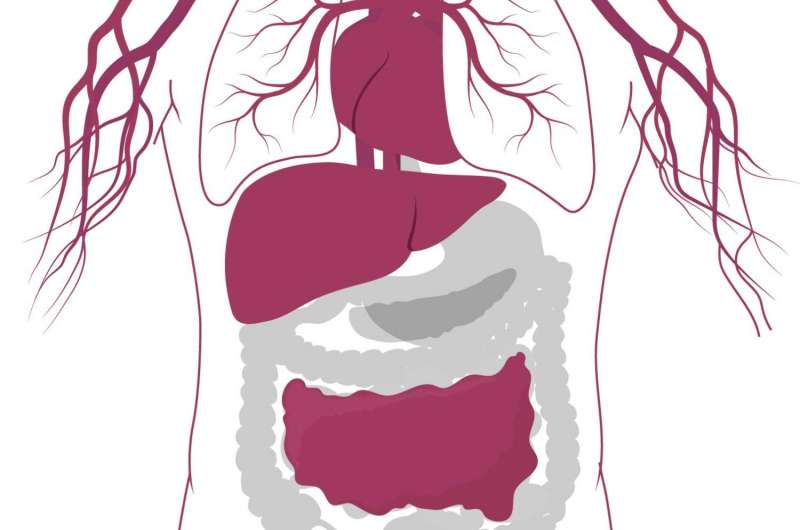Stem cell consortium tackles complex genetic diseases

Much of stem cell research over the past decade has focused on Mendelian disorders—those caused by a single gene, such as cystic fibrosis, muscular dystrophy, and Huntington's disease. But as genome-wide association studies continue to reveal, most conditions are more complex, arising from dozens or hundreds of genetic mutations working together to cause disease. To understand how someone can inherit a higher risk for hypertension or diabetes, it's necessary to study how these mutations contribute on a cellular level.
To address this challenge, in 2010, the US National Heart, Lung, and Blood Institute's (NHLBI) Next Generation Genetic Association Studies Consortium sponsored a series of studies that began the hard work of analyzing induced pluripotent stem (iPS) cells gathered from large groups of patients to learn more about how individual mutations contribute to polygenetic diseases. Now, a group of 11 reports resulting from the collaborative effort appear in Cell Stem Cell, Stem Cell Reports, and EBioMedicine.
The papers are presented on an interactive web portal, http://www.cell.com/consortium/NextGen.
"When this started, the stem cell field had begun to get to the point where you could contemplate making iPS cells at scale for perhaps hundreds or thousands of individuals," says Chad Cowan of the Harvard Stem Cell Institute, Massachusetts General Hospital, and the Broad Institute. "The time was right and the NHLBI had the vision to know that the next step in genome-wide association studies is to systematically interrogate the molecular mechanisms of specific genes with in iPS cells."
The challenge the consortium aimed to overcome was: if a condition—such as cardiovascular disease—has over 100 mutations that could contribute to its cause, how do you measure each gene's role? Animal models are unlikely to help because the changes may be too subtle, and studying stem cell lines from one individual wouldn't tell the whole story as people carry different genetic risk factors. So, the research groups generated iPS cell lines—each requiring around 4-6 months of labor and costing up to $20,000—from hundreds of individuals to assess the physiological variation.
This resource is already yielding several lessons: one, the number of stem cell lines needed to analyze polygenetic disease may not require hundreds of samples. Cowan, who looked at liver metabolism abnormalities, found that his group could get results with a smaller collection of cells. Two, very small changes in gene expression could yield surprisingly dramatic changes in a cell, and researchers are curious to find out how. Three, some of the effects mutations have on cells may manifest before the stem cells are differentiated.
"While iPSCs show considerable promise as a complement to genome-wide association studies in understanding the functional basis of variation, there is still quite a lot of work to do in terms of standardization of protocols and understanding of best practices to make this type of approach a reliable discovery tool," writes Cell Stem Cell Editor Deborah Sweet in an editorial about the consortium (DOI: 10.1016/j.stem.2017.03.020). "The potential is there, though, and it's an exciting prospect to consider."
The work will also be helpful to establish the fundamental building blocks for studying polygenetic diseases. For example, these cell lines are something researchers can order from a distributor (WiCell) in the near future. The efforts may also lead to more targeted therapeutics. Other large-scale research efforts with goals similar to those of the NextGen Consortium are also in progress. In Europe, there is the HipSci Initiative in the UK and the EU project StemBANCC.
More information: The NextGen Consortium Reports:
Chad Cowan (Harvard University), Cell Stem Cell: "Induced Pluripotent Stem Cell Differentiation Enables Functional Validation of GWAS Variants in Metabolic Disease" www.cell.com/cell-stem-cell/fu … 1934-5909(17)30032-2
Stephen Duncan (Medical University of South Carolina), Cell Stem Cell: "A Drug Screen using Human iPSC-Derived Hepatocyte-like Cells Reveals Cardiac Glycosides as a Potential Treatment for Hypercholesterolemia" www.cell.com/cell-stem-cell/fu … 1934-5909(17)30033-4
Kelly Frazer (University of California), Cell Stem Cell: "Large-Scale Profiling Reveals the Influence of Genetic Variation on Gene Expression in Human Induced Pluripotent Stem Cells" www.cell.com/cell-stem-cell/fu … 1934-5909(17)30080-2
Kelly Frazer (University of California), Cell Stem Cell: "Aberrant DNA Methylation in Human iPSCs Associates with MYC-Binding Motifs in a Clone-Specific Manner Independent of Genetics" www.cell.com/cell-stem-cell/fu … 1934-5909(17)30081-4
Kelly Frazer (University of California), Stem Cell Reports: "IPSCORE: A systemically derived resource of iPSC lines from 222 individuals for use in examining how genetic variation affects molecular and physiological traits across a variety of cell types" www.cell.com/stem-cell-reports … 2213-6711(17)30118-2
Kelly Frazer (University of California), Stem Cell Reports: "High-throughput and cost-effective characterization of induced pluripotent stem cells" www.cell.com/stem-cell-reports … 2213-6711(17)30117-0
Thomas Quertermous (Stanford University), Cell Stem Cell: "Analysis of Transcriptional Variability in a Large Human iPSC Library Reveals Genetic and Non-genetic Determinants of Heterogeneity" www.cell.com/cell-stem-cell/fu … 1934-5909(16)30401-5
Marlene Rabinovitch (Stanford University), Cell Stem Cell: "Patient-Specific iPSC-Derived Endothelial Cells Uncover Pathways that Protect against Pulmonary Hypertension in BMPR2 Mutation Carriers" www.cell.com/cell-stem-cell/fu … 1934-5909(16)30266-1
Daniel Rader (University of Pennsylvania), EBioMedicine: "ATP-Binding Cassette Transporter A1 Deficiency in Human Induced Pluripotent Stem Cell-Derived Hepatocytes Abrogates HDL Biogenesis and Enhances Triglyceride Secretion" www.ebiomedicine.com/article/S … (17)30105-6/fulltext
Daniel Rader (University of Pennsylvania), Cell Stem Cell: "Large, Diverse Population Cohorts of hiPSCs and Derived Hepatocyte-like Cells Reveal Functional Genetic Variation at Blood Lipid-Associated Loci" www.cell.com/cell-stem-cell/fu … 1934-5909(17)30088-7
Martin Steinberg (Boston University), Stem Cell Reports: "A Comprehensive, Ethnically Diverse Library of Sickle Cell Disease-Specific Induced Pluripotent Stem Cells" www.cell.com/stem-cell-reports … 2213-6711(16)30307-1



















